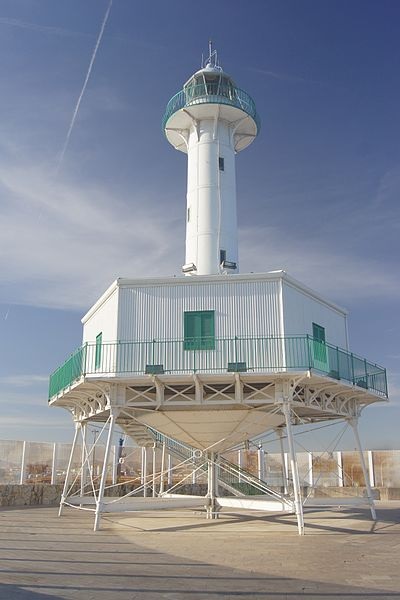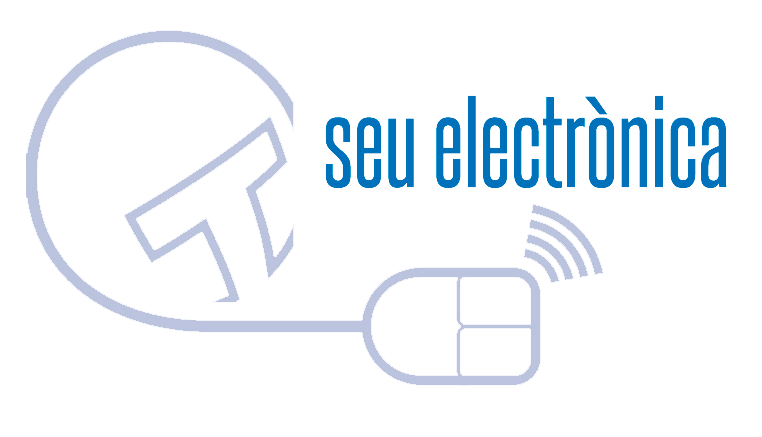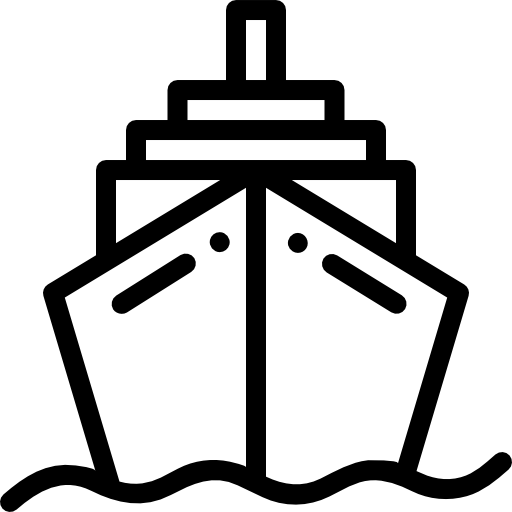BANYA LIGHTHOUSE TARRAGONA PORT
HISTORY
The natural port of Alfaques occupies all of the southern area of the Ebro Delta, on the southern limits of the province of Tarragona and is protected on the sea side by a long neck of sand known as the "Trabucador Beach", where the Alfaque peninsula begins and places of interest include the Baña Point and the Corballera Point. Used for many years for the exchange of merchandise and for supplying the area of San Carlos de la Rápita and as a refuge from storms for vessels, there existed the problem of accessing it, as a difficulty was posed in recognising the shallows in contrast to the background mountains. For this reason, even in the daytime, the number of ships run aground and shipwrecks were numerous, which determined this area to be one that most needed lighting and signing and as a result, it was included in the First Plan of Maritime Lighting in Spain, approved by Royal Decree on 13th September 1847. In it was established the building of three lighthouses of differing order and location, to be placed on the Island of Buda, Baña Point and the Port of Fangar, geographical areas that best represented the land limits of the area. Attending to the urgency, on 3rd October 1859 the engineer Ángel Camón presented a project entitled “Description of an iron lighthouse model for the Points at Baña in the Alfaques and the Fangar”, that would place an iron tower on the Ebro Delta.
In the same way as would be used later on by Lucio del Valle, he chooses to use the coils invented by the Englishman Alexander Mitchell for the foundations "…whose vast resistance, however soft the soil, is enough to build a secure foundation…” basing his design on a support made up of 8 wrought iron pillars, placed at the angles of a regular octagon, joined by braces and reinforced by a central pillar also joined to the perimeter. This ensemble supported a small octagonal edifice, with seven interior hollows in a triangular shape, with scarcely any living space meant to house an entrance, kitchen, bedrooms for the two keepers, store and fuel room, pantry and lounge.
In the centre was raised a cylindrical tower. On the outside a 0.80m wide gallery protected by an iron balustrade surrounded it. It was originally planned to be built in the water, at an average depth of 3m and with the focal plane situated at 12.70, above sea level. The columns would be sunk 6m into the seabed Although as stated in the telling of the history of the Lighthouse at Tortosa, the iron towers proposed by Ángel Camón were not accepted, they did serve as a basis for a Royal Order of 9th January 1860, for which the inspector Lucio del Valle took charge, commissioned by him, then in the City of London, the making of the definitive projects for the lighthouses at Buda, Baña and Fangar. In the Royal Order, Lucio del Valle was granted the right to request prices from manufacturers in England and to accept formal quotes.
The Baña Lighthouse was the second most important out of the three forecast for the Ebro Delta. When presenting it, its architect Lucio del Valle emphasises “the convenience of doing away with pre fabricated works, replacing this throughout the building with iron pieces enabling the easy dismantling of the tower for placement at another point” something that would happen almost 120 years later. To construct it, he drafted two different projects: in the first he placed the keepers’ house slightly raised off the ground, only enough to carry out painting and maintenance of the iron pieces. The foundations divided it into two halves: nine columns upon a central square, on top of which was placed a strong platform on which the tower rested and 12 more of lesser diameter spread out around the exterior square as support for the buildings walls.
The tower would be made of cast iron supports with interior rims on its four sides to unite them conveniently to joins found on the vertical, and dependant upon parallel circles at the base on the horizontal. The living quarters, on the square first floor, included two independent rooms for the keepers, store room and study for the engineer. For the second project, the house reaches higher, shortening the length of the tube of the staircase and making this of plaster, rather than cast iron. The calculations of weight and cost of these from the point of embarcation at Gloucester were the following:
Project n. 1: 68,50 tonnes; 1.541 pounds 5 shillings.
Project n. 2: 46,70 tonnes; 1.053 pounds 0 shillings.
PROCESS
This gave the second a favourable advantage of a saving of 488 pounds 5 shillings, and it is therefore chosen.
It was built at the Baña point, on a flat beach projecting south and some 3 miles southeast of the mouth of the Alfaques Port. The height over land was 18,70m and only 0.30m more above sea level. The tower was made of iron, slightly conical, painted a yellowish colour, with a polygonal lamp and natural copper coloured dome. It occupied the centre of the keepers room, was hexagonal in shape with two doors on the sea side and one window on each of the remaining sides. The materials used in its construction were the superior quality English wrought iron for the columns, armature, joists and other metal elements, and cast iron from the same place, for those pieces that required it. Galvanised iron plate for the exterior of the living quarters; the interior and the floorboards of treated pine, with a maximum width of 7 inches on the walls and 9 on the floor.
The interior arrangement was of reinforced boards with cornice skirting and a middle sash. The kitchen partitions were of undulating iron plate to avoid fires. The use of nails was prohibited. The securing was done solely using screws. The window panes and entrance door were English in style with wooden shutters. Its lens built in 1861 was from the English Chance Brothers company, third order and made up of three zones that supplied a white fixed light, with a range of 13 miles. Together with the lamp it cost 30,166 reales. The manufacturing of the building and the tower, that weighed 48.80 tonnes, were awarded to the Englishman Mr Henderson Porter, from Birmingham, for 101,088 reales, to build the Lighthouses at Buda and Fangar, a condition offered as a prize to whoever gave the lowest quote for the first. It was lit for the first time on 1st November 1864 with a light supplied by an olive oil lamp, looked after by two keepers. By 1883 it had a two wick Maris lamp, and some years later, an acetylene installation was fitted. The gas was made on site by a calcium carbonate gas engine. This system was replaced in 1929 by an automatic Dalen installation that also worked off acetylene gas, stored in three batteries type AK-25 from the Swedish AGA company. It was supplied by a 25litre burner with an automatic bulb changing system and a solar valve to turn the light off during the day. It appeared as a white flashing light which flashed every 15 seconds and was visible from a distance of 12 miles. The location marked the beginning of a small sandy peninsula, joined to the Delta by a narrow neck of land that was frequently cut off with the storms. Supply was carried out by sea weather permitting, or on land and on foot otherwise, as long as the passage was not flooded by the waters. The access route ended at the Clot point, which forced a 10km trek over the beach. The living quarters were very small. There was only one room and kitchen, and they even lacked a tank for drinking water, which made life for the keepers and their families very difficult. In 1913 two huts were built: one for fuel storage and the other for building inspection. Due to the terrible living conditions, on 18th July 1943, the personnel that attended were got rid of. From then on the service was attached to the Lighthouse at San Carlos de la Rápita. New requirements within reach, proved its faults. On 1st November 1978 it was switched off to give way to a new standard concrete tower, 23.7m high and 3m in diameter, in which was fitted the old lens from the iron lighthouse and the same light system as already in place (see history). Taking advantage of the building works, the remnants of the inspection cabin and the storage hut were demolished, closing in the land that it had occupied using a lattice fence.
Abandoned since then, a slow deterioration began, which no-one maintained. As a result of an inspection visit carried out in 1980 by the technician Miguel Ángel Sánchez Terry, in which its bad state of repair was set out and the need to repair it due to its historical importance, the interests of the Maritime Signals Service were awakened. After an attempt by the engineer José Hernando Requejo from the aforementioned Service to take it to Madrid, the then director of the Port of Tarragona Joaquín Juan Dalac, presented a plan to the Committee of the port on 22nd March 1983, requesting the recovery of the old and abandoned iron lighthouse, situated at the Baña point, in the Alfaque peninsula (Ebro Delta), with the aim of restoring it and installing it in the sheltering dock.
The cost of the work would be included in the cost of the building work to the new breakwater dock and was laid out in the Royal Decree two and eight 32/197 and 8 of 27th October, that in its first article, proposed that in the quote of all public work financed by the State, at least 1% of that should be destined for carrying out artistic works, decoration, or embellishment or to achieve the full integration of these in their natural environment. In this way the necessary steps for the granting of the lighthouse were taken.
STUDY
Six days later the matter was approved and one month later, the General Director of Ports gave authorisation, therefore beginning the timely study, at the same time as all necessary historical evidence was being gathered.
Given the problems regarding responsibility of such a delicate task, it is decided to carry the whole thing out via administration and it is the Port Director himself that makes the first project for an amount of 16,116,349 pesetas. From a technical point of view, the works had three different parts: the dismantling from its original placement moving the materials to the port of Tarragona, the restoration of the parts and assembly of these on the chosen site. The first phase was awarded to the company INTEMA SA from Barcelona, for an amount of 6,857,625 pesetas which they completed on 2nd October of the following year. The “reparation and restoration of the parts and elements making up the Baña Lighthouse, previous to their assembly”, quoted at 9,150,120 pesetas were charged to Mecsa from Tarragona on 14th December 1984, with the following details regarding parts to be repaired and rebuilt. Parts to repair:
Lateral and central support columns.
Braces for support of columns.
Lateral support cross-pieces between columns
Full souled JACENA, support for keepers house and cylindrical tower.
Lattice joists between columns.
Braces in a T shape for fixing of plates of the truncated pyramid
Rectangular plates for joining base of truncated pyramid and trapezium shaped plates that make the six sides.
Columns for the keepers house.
Angles for ceiling support.
Cylindrical tower for light access.
Balcony railing keepers house.
Interior doors for the keepers house.
Balcony railing light
Tongue and groove partitions, interior keepers house.
Interior ceiling of the keepers house.
Meanwhile, due to its bad state of repair, it was also necessary to rebuild 21 items more, which included 200m2 of undulated galvanised plating, parts of the façade of the truncated pyramid, 6 joists for the intermediate support of the columns, 34 metres of water pipes, 60 wooden joists, 21 consoles for balcony support, keepers and equipment house, etc. The staircase, of the original access of which no details were known, was not included in the amount.
With almost the entire initial amount exhausted, a new evaluation is carried out to adapt to the situation. Under the title “Modified Project of the Installation at the Port of Tarragona of the old Baña Lighthouse”, an additional amount of 3,110,504 pesetas is approved with which the outstanding jobs are finished. The Lighthouse is now a symbol of the Port. At first it is planned to give it a function, such as a place to hold meetings and special visits, for which the finishing touches to the surroundings are still outstanding. At the Committee Meeting held on 11th July 1988, it is resolved to seek approval to carry out extra works, such as its monumental illumination, exterior development, air conditioning, lightning rod installation, interior and exterior lighting and stair, with an approximate budget of 8,500,000 pesetas. Furthermore, posters reproducing the lighthouse are ordered, under the heading: “A great effort, a great future” publishing in 1990, the centenary year of the modern port, a special postmark that picks up on the design of the poster. With the works finished, a summation from the General Management of Ports and Coasts dated 22nd November 1988, in agreement with the judgement given by the Permanent Lighthouse Commission, laid out that: “Taking into account historical and monumental reasons and put forward by the Port Committee of Tarragona, it will remain in service with the following characteristics:
Situació: Location: on the end of the seventh line up of the Levante Dock.
Colour: White
Rhythm: Isolated flashes.
Nominal Range: 10 nautical miles.
With these prescriptions, supplied with a 1000w, 220V halogen bulb, acrylic ML-300 lens, FLAG 2AS electric changer and signal light from the Tideland company and an Electra Molins generator as a back up, it was lit again on the night of 13th to 14th August 1990, replacing the lighthouse on the Aragon Dock which on that same day was turned off. Its light was useless as the continuous works on the port extension had left it behind. Not withstanding, on 17th of the same month it suffered an important breakdown which left it turned off until 4th March 1991. Following this, on 13th August 1992, the 500mm cut and polished lens from the lighthouse on the Aragon Dock was fitted to replace the acrylic one that had been burnt due to a lack of ventilation.
Another change in the technical equipment took place on 27th July 1996, date on which the signal light was replaced by an MD-03 one from the Maquinista Valenciana Un nou canvi en l'equipament tècnic va tenir lloc el 27 de juliol de 1996, data en què es va substituir l'aparell de llampades per un altre MD-03 de La Maquinista Valenciana. To give a practical use to the lighthouse, in 1992 a concession was granted allowing the building to be used as a restaurant. Complimentary to this was built an annex for a bar and various areas, protected by awnings, with tables and chairs. This way, what was already a symbol of the Port, became an important tourist attraction, above all on summer nights. The extension works on the Aragon Dock that began in 1996 cut off access to it and the concession expired. Currently, and until building work ends, it has no practical use.
Old images
https://www.porttarragona.cat/en/notes-de-premsa-rss/item/1754-banya-lighthouse-tarragona-port#sigProId445ff0da9f
Image Gallery
https://www.porttarragona.cat/en/notes-de-premsa-rss/item/1754-banya-lighthouse-tarragona-port#sigProId325eb3f76a























